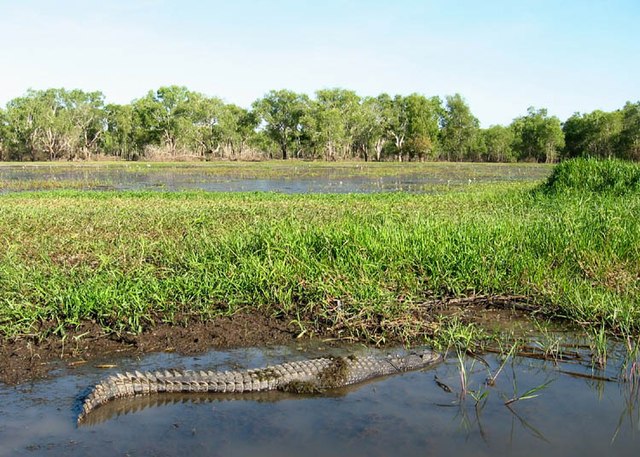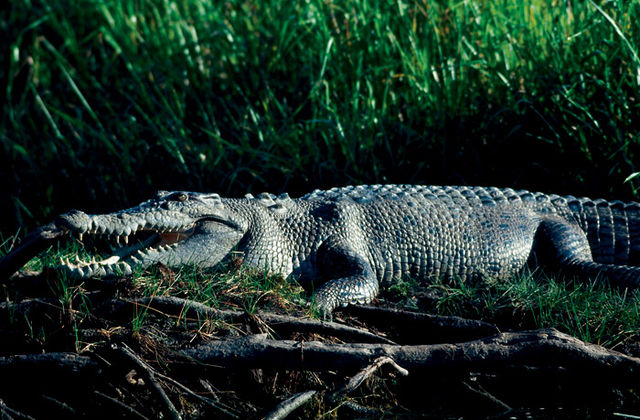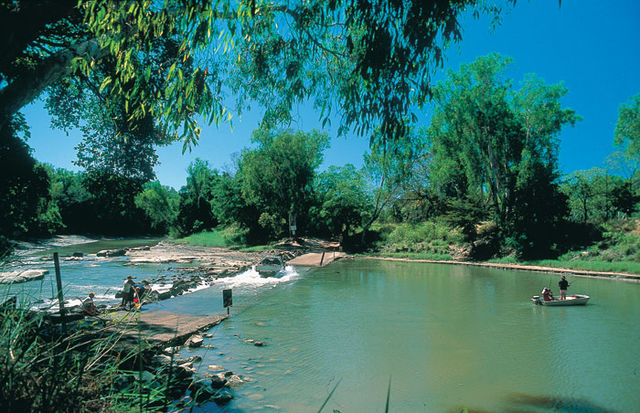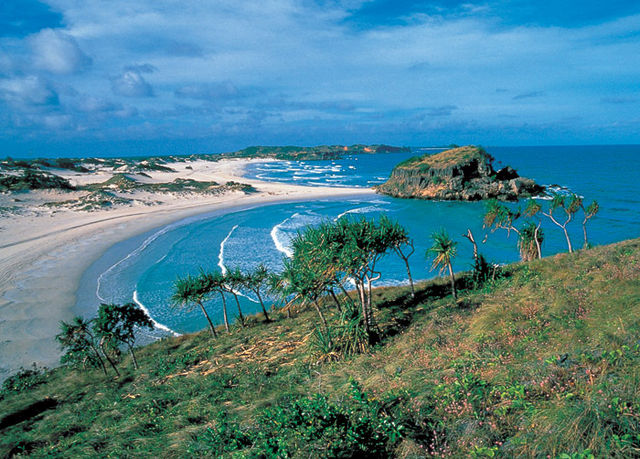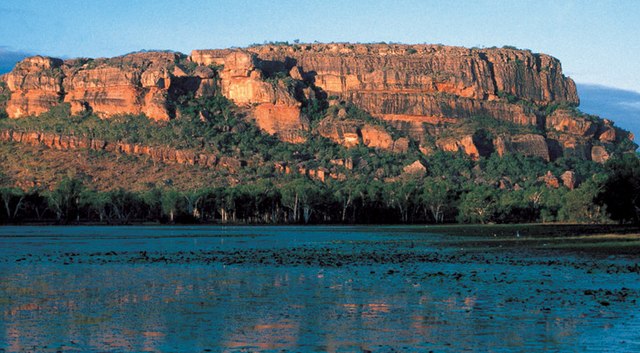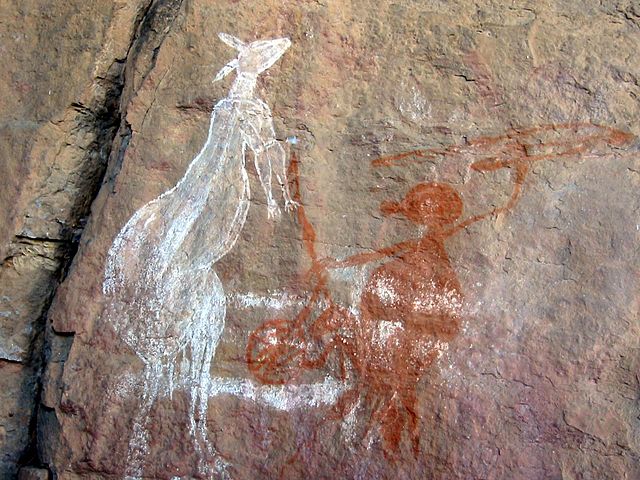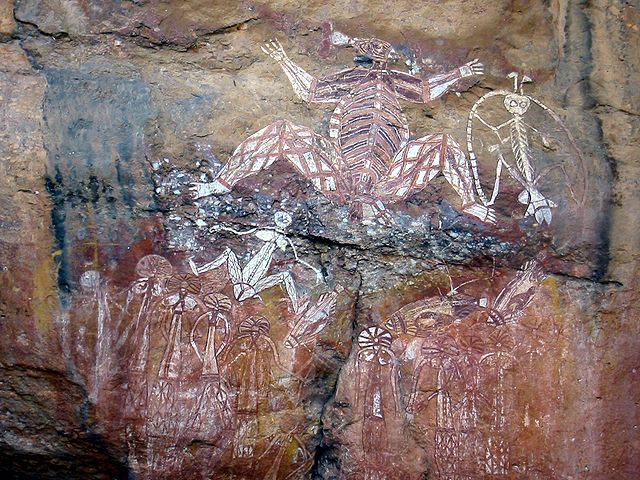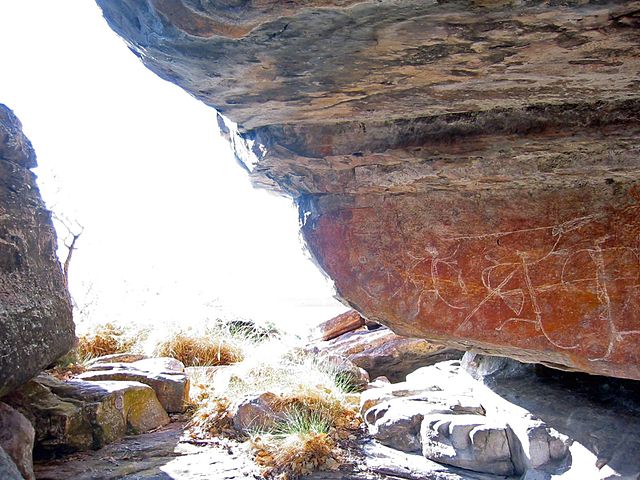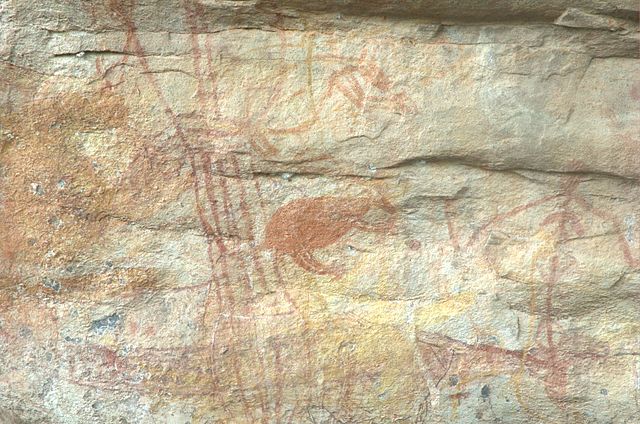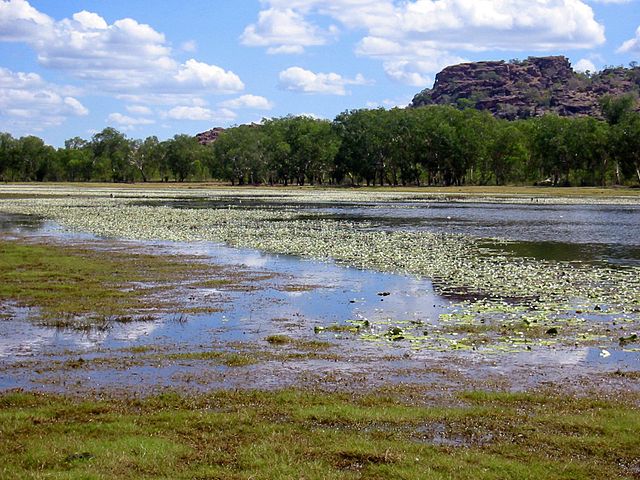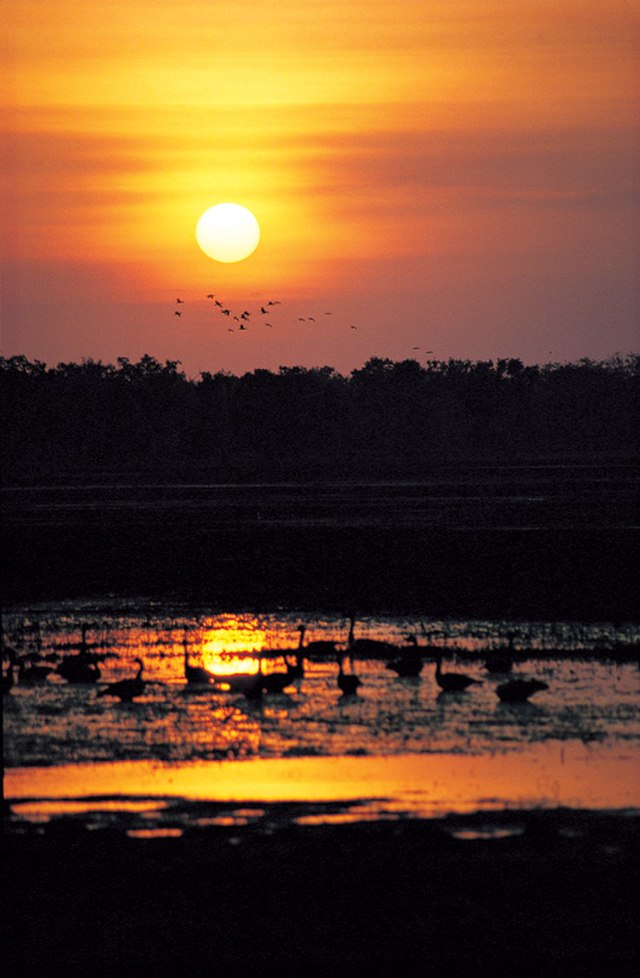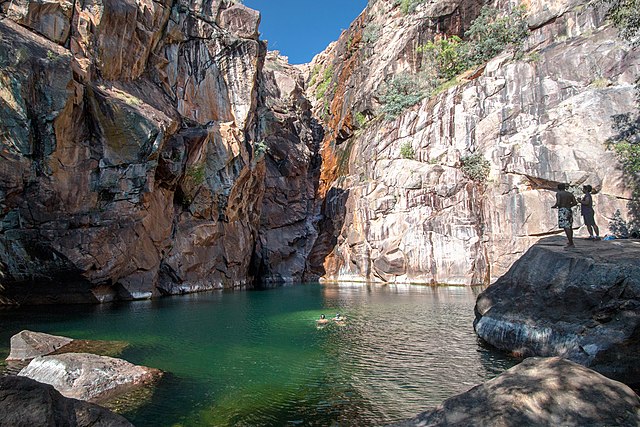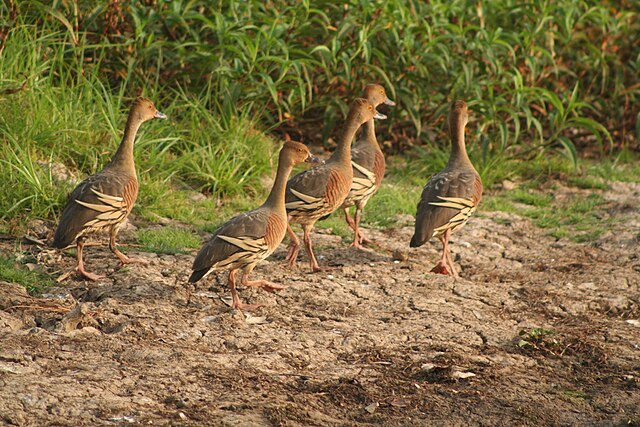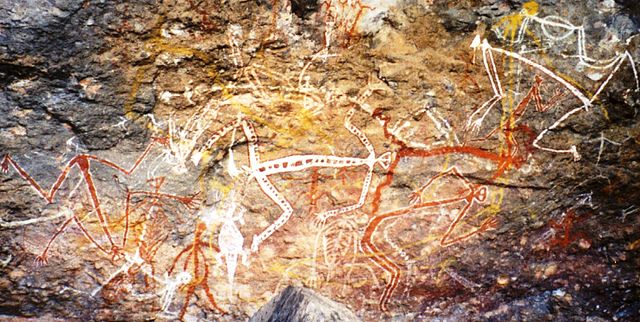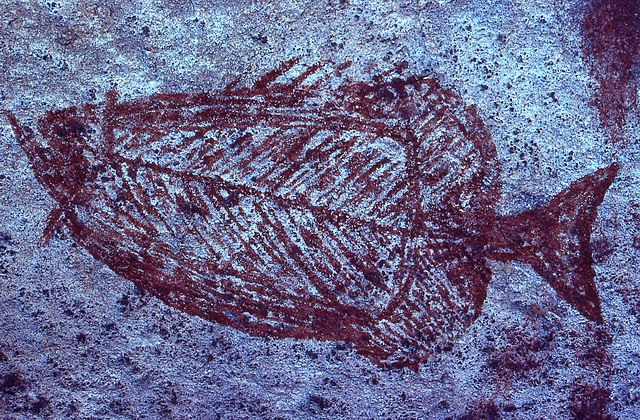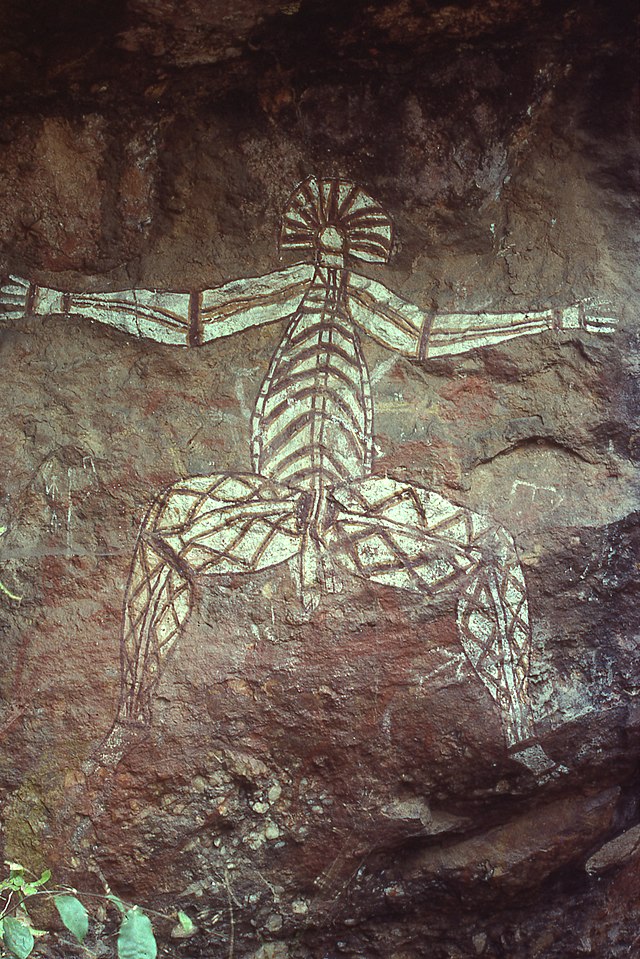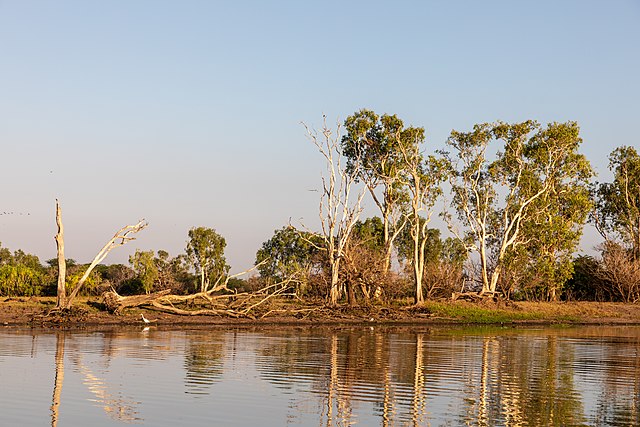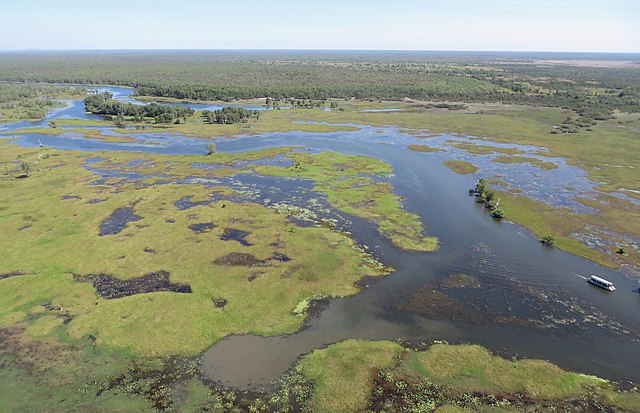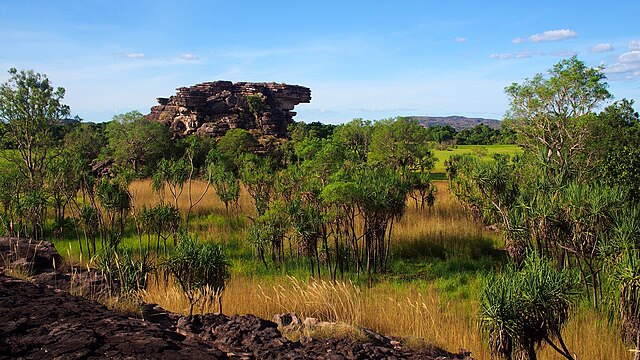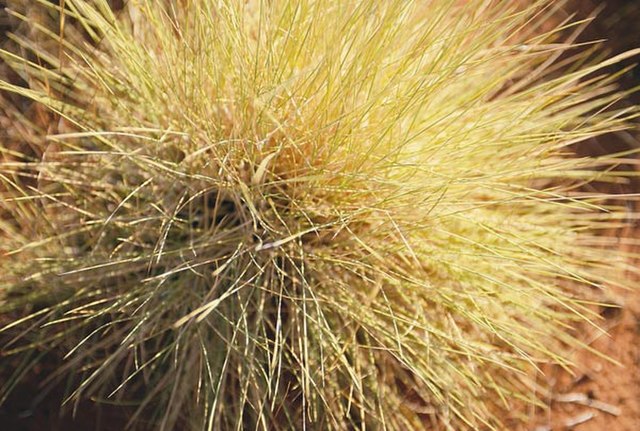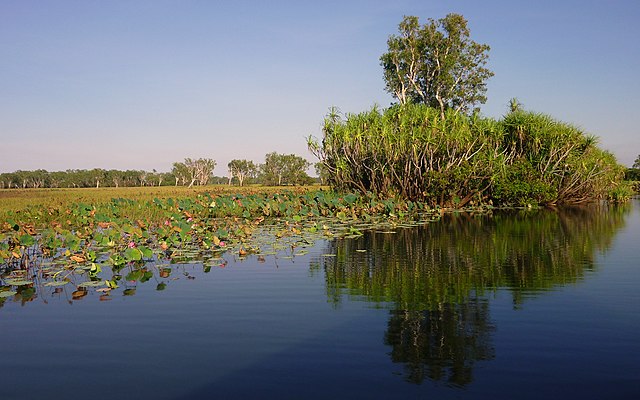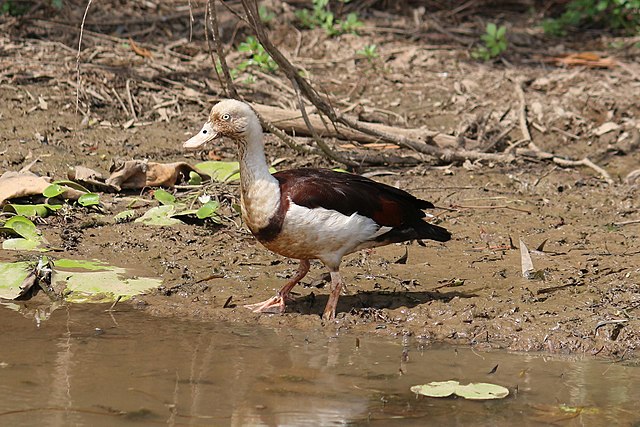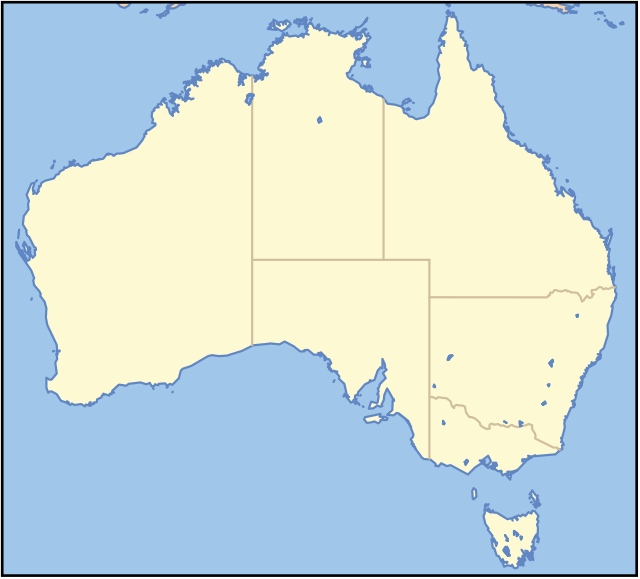Parque nacional Kakadu (Kakadu National Park)
El parque nacional Kakadu es un parque nacional del Territorio del Norte (Australia), ubicado a 171 km al este de Darwin. El nombre 'Kakadu' proviene de la lengua aborigen llamada gagudju, una de las que se hablaban al norte del parque a principios del siglo XX. El gagudju ya no se habla regularmente, pero los descendientes de aquellos que la hablaban todavía habitan la región del parque. El parque forma parte del Patrimonio de la Humanidad según la Unesco. Su extensión es equivalente a la de Israel y se cree que contiene un 10% de las reservas mundiales de uranio. El parque tiene dos temporadas: la de lluvias y la seca. Durante las lluvias (entre octubre y abril) generalmente no es posible acceder a muchas zonas del parque; en cambio, durante la temporada de sequía (entre mayo y septiembre), puede visitarse. Los aborígenes de los pueblos Bininj y Mungguy dividen el año en seis temporadas:
Gunumeleng – entre mediados de octubre y finales de diciembre, temporada de tormentas pre-monzónicas con temperaturas cálidas y tormentas eléctricas frecuentes en las tardes
Gudjewg – entre enero y marzo, temporada del monzón con tormentas, fuertes lluvias e inundaciones; el calor y la humedad generan una explosión en la vida animal y vegetal
Banggerreng – abril, época de violentas tormentas y fuertes vientos, si bien las inundaciones disminuyen
Yegge – entre mayo y mediados de junio, tiempo más fresco con baja humedad, época en la que los aborígenes queman la vegetación para que crezca el pasto para el ganado
Wurrgeng – entre mediados de junio y mediados de agosto, tiempo más frío con baja humedad, la mayoría de los arroyos se secan y las planicies inundadas en la temporada de lluvia se secan
Gurrung -entre mediados de agosto y mediados de octubre, tiempo cálido y seco. Los pozos (billabongs) se secan poco a poco.Las atracciones del parque incluyen la oportunidad de relacionarse con los habitantes de la región, la geología, la flora y fauna que hacen de Kakadu una fuente única y apreciada, tanto en Australia como en el resto del mundo. El centro de visitantes de Bowali ofrece información sobre el parque. El centro Warradjan para la cultura aborigen presenta aspectos de la cultura local en forma accesible.
La parte más interesante del parque son las planicies inundables, que ofrecen el mejor aspecto visual. Los cocodrilos marinos y cocodrilos de Johnston duermen gran parte del día en los bancos de arena de los ríos de cocodrilos y de los múltiples pozos. Igualmente pueden observarse cuando nadan o flotan en el agua. Igualmente se puede observar una gran variedad de aves en el parque.
Son dignos de destacar por sus pinturas rupestres los emplazamientos de Ubirr, Nourlangie y Nanguluwur habitados por el hombre ininterrumpidamente desde hace más de 20 000 años. Algunas de estas pinturas se encuentran entre las manifestaciones pictóricas más antiguas de la humanidad. También en Nourlangie hay cascadas y lugares para nadar.
Links
Images Gallery
Comments
-
Kakadu National Park is one of the most impressive wonders of the country. Above all, Kakadu holds dreamlike landscapes, lush vegetation full of life, a variety of views, and a humid climate. Waterfalls, rivers, extensive plains, stony hills, ravines and diverse types of plants make up this impressive National Park. Kakadu surely took all the best sides of the region. If you are thinking about visiting Australia, this has to be a mandatory destination. Stopping here and admiring everything that the Kakadu National Park has to show is a must. And you can enjoy it all on a four-wheel-drive safari! Kakadu is located in the South Alligator River system, to the far North of Australia, a couple of hundred kilometers southeast of the state capital Darwin. However, if you come from Sydney or Melbourne, you have to fly to Darwin. Most airlines offer international flight packages including inland flights.
2 months ago -
Great bush camping and walks. Excellent info and education around the walks and rock art sites. The cultural centre is brilliant. The Guluyambi cruise on East Alligator River was also brilliant.
a month ago -
-
Kakadu has so much to offer. The landscape changes considerably as you drive through. Each season has something to offer. The wetlands have a lot of birds. Heaps of crocs in the rivers....don't swim there. Scenic flights, boat cruises and walks on offer. I loved my visit here. The campsites are also great.
7 months ago -
-
World Heritage-listed Kakadu National Park, in the Top End, is Australia's Largest National Park and one of the world's most spectacular wilderness areas. Covering more than 19,840 square kilometers, Kakadu is the largest national park in Australia and the second largest in the world. Within its borders lie monsoon rainforests, mangrove swamps, rivers, gorges, ancient rock paintings, wetlands, and waterfalls, as well as an astounding diversity of wildlife. On the north coast lies the tidal zone, with river estuaries, mangrove swamps, and tall monsoon rain forests. Inland are the flood plains through which rivers pursue a winding course to the sea. The escarpment of the Arnhem Land plateau runs diagonally through the park from southwest to northeast. After heavy rain, water pours over its bare rocks and down the escarpment in magnificent waterfalls- Jim Jim Falls and Twin Falls are two of the most famous. Farther inland lies the gently undulating upland country crossed by the main access roads and excellent hiking trails. The amazing variety of wildlife includes more than 70 different species of reptiles, the largest and most dangerous of which is the saltwater crocodile, as well as a vast array of fish, mammals, and birds. In addition to all these natural attractions, the park is home to many sacred aboriginal sites and rock paintings. You can explore the park by car, on foot, and on cruises through the waterways, but note that seasonal flooding may close some sections of the park-especially during the wet season. For comprehensive information on the natural history and culture of this unique area stop by the National Park's Visitors Center in Jabiru. The best time is in the dry season between June and August. During the wet season it's rain and it is too hot. 3 days will enough to explore whole area of park. It's open for visitors 24×7.
10 months ago -
Beautiful scenery, worth the travel! Catch the sunset at Uluru and watch the rock change colour, book the light up tour before you get there as we missed out to no availability to book in on the day (and we were there in a quiet time) Normally $25 per person entry into the national park but currently free due to rona! Yay. Campsite is $45 unpowered with nice facilities. Petrol is priced as mad as expected.. think we paid $1.80 per litre..
11 months ago -
We went here in 2018. We went here visiting a friend of ours and their local friend. He took us to the local must go places to visit. This place is so big and vast that in the week we were there we got to see a lot but not everything. We have to go back. Would advise everyone to take heed of the signs and done swim where crocodiles are, don’t risk it.
a year ago


